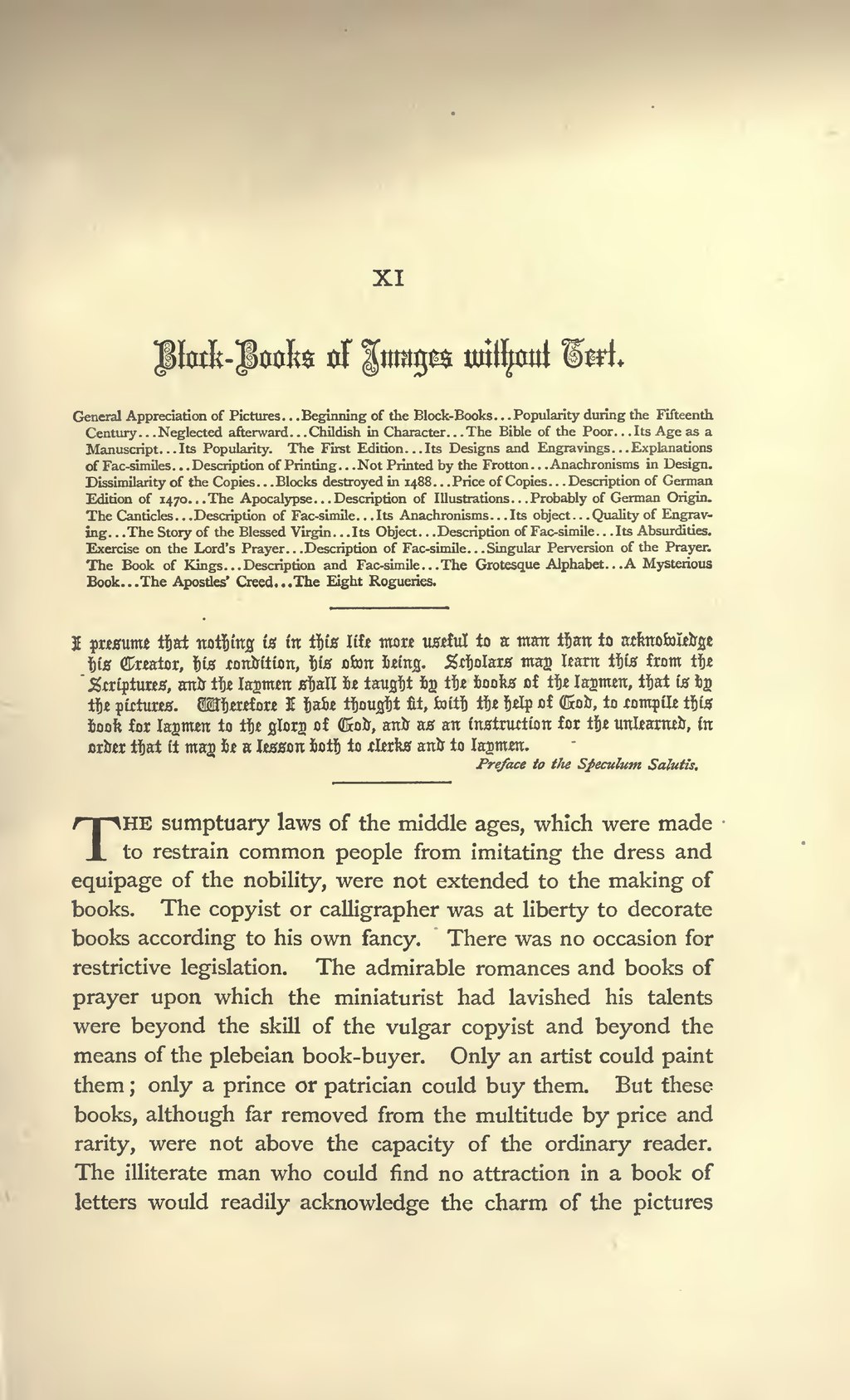XI
Block-Books of Images without Text.
General Appreciation of Pictures … Beginning of the Block-Books … Popularity during the Fifteenth Century … Neglected afterward … Childish in Character … The Bible of the Poor … Its Age as a Manuscript … Its Popularity. The First Edition … Its Designs and Engravings … Explanations of Fac-similes …Description of Printing … Not Printed by the Frotton … Anachronisms in Design. Dissimilarity of the Copies … Blocks destroyed in 1488 … Price of Copies … Description of German Edition of 1470 … The Apocalypse … Description of Illustrations … Probably of German Origin. The Canticles … Description of Fac-simile … Its Anachronisms … Its object … Quality of Engraving … The Story of the Blessed Virgin … Its Object … Description of Fac-simile … Its Absurdities. Exercise on the Lord's Prayer … Description of Fac-simile … Singular Perversion of the Prayer. The Book of Kings … Description and Fac-simile … The Grotesque Alphabet … A Mysterious Book … The Apostles' Creed … The Eight Rogueries.
Preface to the Speculum Salutis.
The sumptuary laws of the middle ages, which were made to restrain common people from imitating the dress and equipage of the nobility, were not extended to the making of books. The copyist or calligrapher was at liberty to decorate books according to his own fancy. There was no occasion for restrictive legislation. The admirable romances and books of prayer upon which the miniaturist had lavished his talents were beyond the skill of the vulgar copyist and beyond the means of the plebeian book-buyer. Only an artist could paint them; only a prince or patrician could buy them. But these books, although far removed from the multitude by price and rarity, were not above the capacity of the ordinary reader. The illiterate man who could find no attraction in a book of letters would readily acknowledge the charm of the pictures
